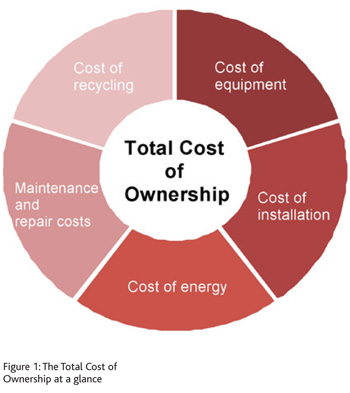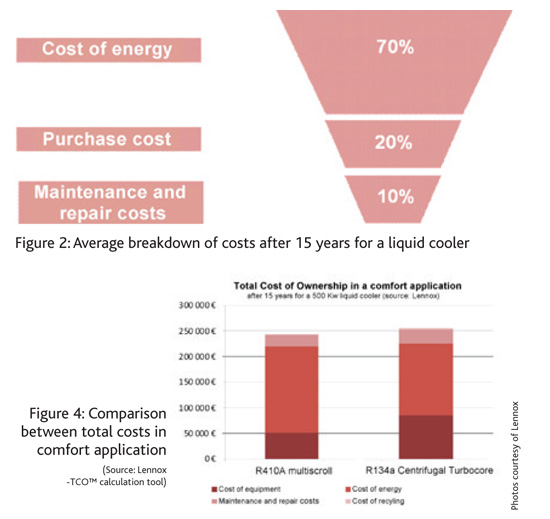The initial investment represents only a fraction of the true cost of ownership of an air conditioning system, says Florian Beduchaud, and demonstrates that the total cost of ownership is an essential consideration and knowing it helps make the correct purchasing decision.
The initial investment represents only a fraction of the true cost of ownership of an air conditioning system, says Florian Beduchaud, and demonstrates that the total cost of ownership is an essential consideration and knowing it helps make the correct purchasing decision.
While investing in an air conditioning system, the arguments typically made are:
I shall endeavour to counter the arguments.
How to make the correct investment decision
When deciding to purchase an air conditioning system, the total cost of ownership (TCO: also known as life cycle cost, overall cost of ownership or even overall cost) is an essential consideration in taking the correct investment decision. The initial purchase cost of a piece of equipment is only part of the true cost of ownership of an air conditioning system. Everything does not necessarily have to boil down to the argument that the price is the most important factor. But if someone is ready to accept an on-cost for a machine that performs better, our customers have every legitimate right to ask themselves: “If I pay more, what will the payback time be?”
The TCO thus makes it possible to balance investment choices by looking at the savings they could then generate over the life of the air conditioning system. Air conditioning systems that have very good energy performance are often more expensive to build than others, but in terms of overall cost, they are, in theory, far more economical. That, of course, has to be demonstrated. But we will revisit the issue later.
What does Total Cost of Ownership mean?
 The Total Cost of Ownership is the cumulative cost of a product throughout the length of its life cycle – from its design to its dismantling. It takes account of all costs, including the costs of installation, operating costs, compliance with standards, maintenance costs and the cost of recycling at the end of its life. The initial investment or outlay represents only a fraction of the true cost of ownership of an air conditioning system. A comparison of total cost between different cooler technologies can be cited as an example.
The Total Cost of Ownership is the cumulative cost of a product throughout the length of its life cycle – from its design to its dismantling. It takes account of all costs, including the costs of installation, operating costs, compliance with standards, maintenance costs and the cost of recycling at the end of its life. The initial investment or outlay represents only a fraction of the true cost of ownership of an air conditioning system. A comparison of total cost between different cooler technologies can be cited as an example.
The analysis and evaluation of this cost are managerial tools that help in the decision-making process in order to inform design choices, and enlighten purchasers in their selection of a product.
The Total Cost of Ownership can be represented by the following formula:
To give an analogy, an iced water production unit may be 15% less expensive than its competitor. But because of its lower energy efficiency, ultimately, it represents a far higher cost to the end-user.
Conversely, it might be thought that with the cost of energy ultimately representing the greatest share of the expenditure, the best overall cost is obtained with machines that are highly efficient. That is true if, and only if, the additional purchase cost is reasonable and if the investor is prepared to factor in the payback time.
Thus, when making the decision to purchase an air conditioning system, it is important to compare the investment alternatives while keeping in mind the true costs throughout the life cycle, as shown in Figure 2.

Let us consider the example of a tertiary building requiring 500 kW of cooling. The customer may hesitate between solution A “R410A multi-scroll cooler” which is a solution with a high energy efficiency ratio (ESEER 4.1) and solution B ‘Centrifugal cooler with magnetic bearings of the Turbocor’, which enjoys a very high energy efficiency ratio (ESEER 5.1) with air condensation.
To sum up …
Why Total Cost of Ownership?
The writer is Head of chiller products at Lennox and can be reached at florian.beduchaud@lennoxeurope.com
Copyright © 2006-2025 - CPI Industry. All rights reserved.